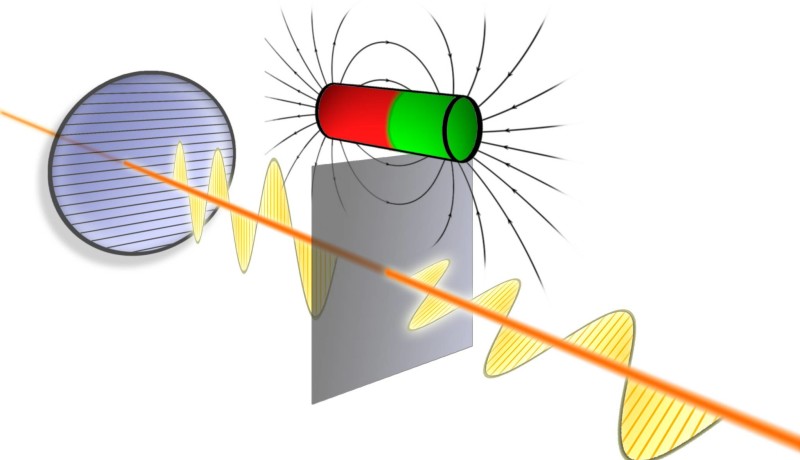Quantum efect rotates polarization direction
May 30, 2017
on
on

A light wave travelling through empty space always oscillates in the same direction. However, there are materials which can rotate this oscillation direction (polarization direction) when they are located in a magnetic field, which is called the magneto-optical effect. At the Technical University of Vienna a team led by Professor Andrei Pimenov has experimentally demonstrated a variant of this effect which has been the subject of conjecture for a long time: special materials called “topological insulators” rotate the polarization direction of light in precisely defined quantum steps instead of linearly. The size of these steps depends only on fundamental physical parameters, such as the fine-structure constant.
The inside of a topological insulator cannot conduct electricity, but its surface is an excellent conductor. When a light beam is passed through the insulator, the surface determines what happens. The light beam is rotated twice by the surface: once when it enters, and again when it exits.
Using these materials, it is theoretically possible to measure physical constants more precisely than is presently possible, or even introduce new standard definitions for physical constants. Something similar already happened with the quantum Hall effect: the official definition of electrical resistance is now based on that effect.
The research by Professor Pimenov’s team can form the basis for specific engineering applications of materials with special topological properties.
The inside of a topological insulator cannot conduct electricity, but its surface is an excellent conductor. When a light beam is passed through the insulator, the surface determines what happens. The light beam is rotated twice by the surface: once when it enters, and again when it exits.
Using these materials, it is theoretically possible to measure physical constants more precisely than is presently possible, or even introduce new standard definitions for physical constants. Something similar already happened with the quantum Hall effect: the official definition of electrical resistance is now based on that effect.
The research by Professor Pimenov’s team can form the basis for specific engineering applications of materials with special topological properties.
Read full article
Hide full article


Discussion (0 comments)